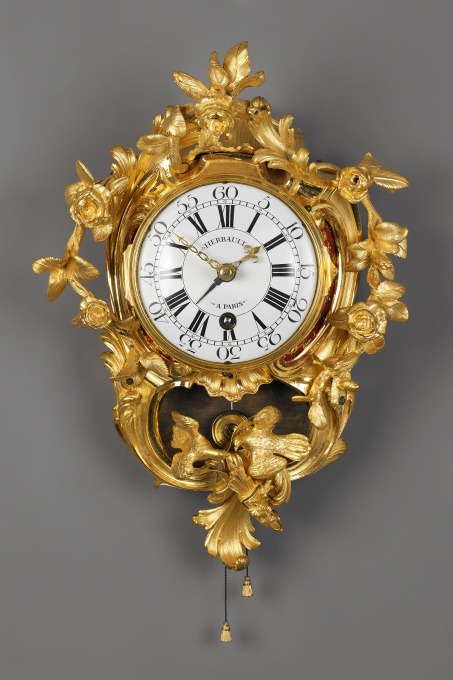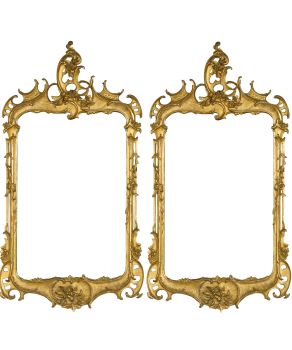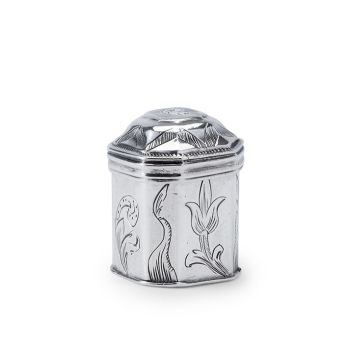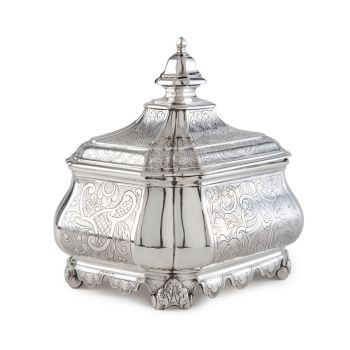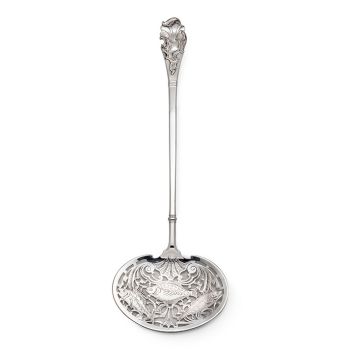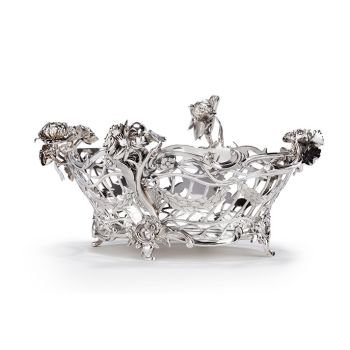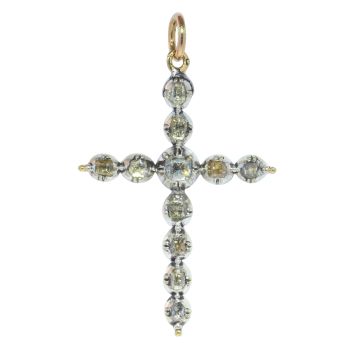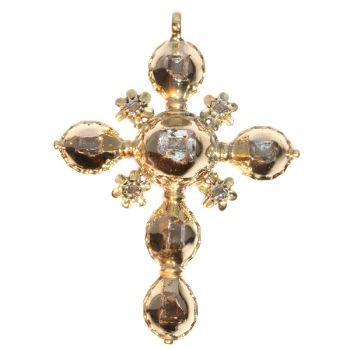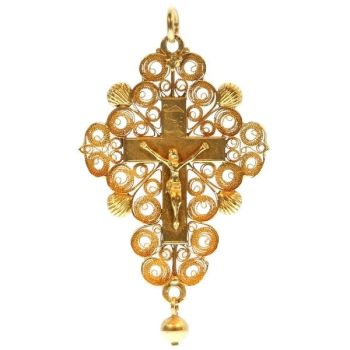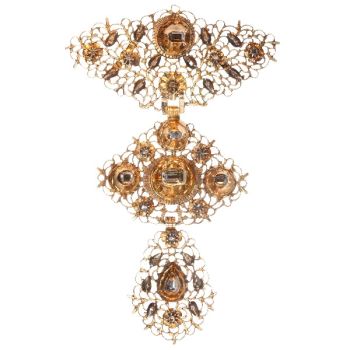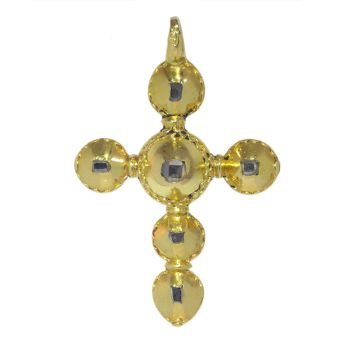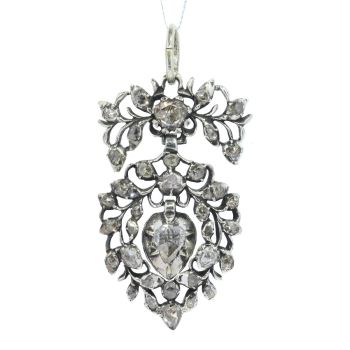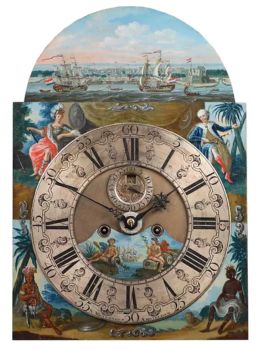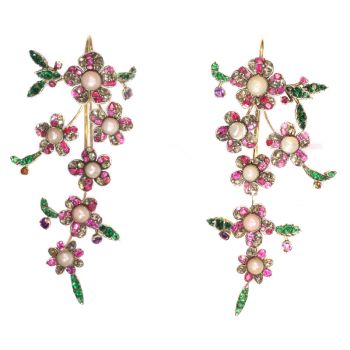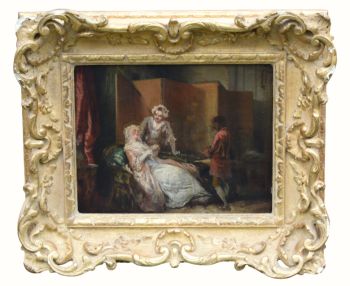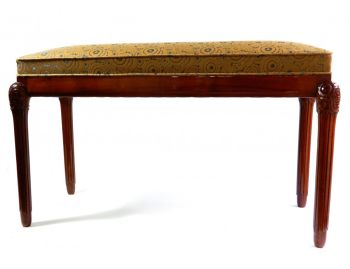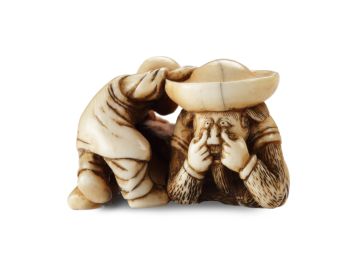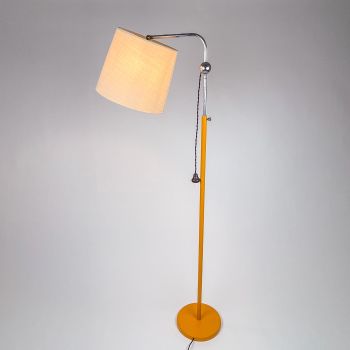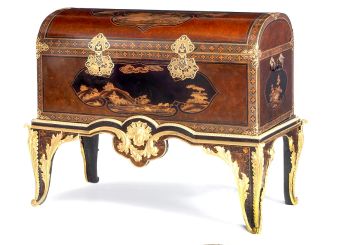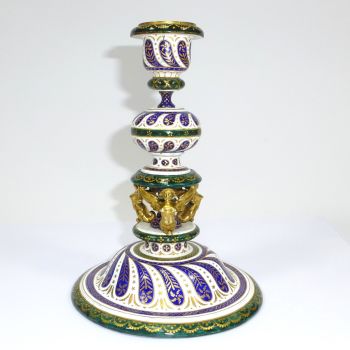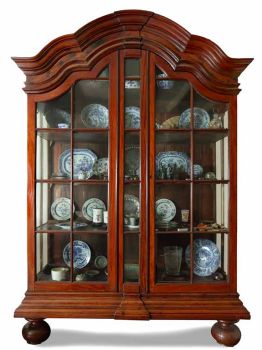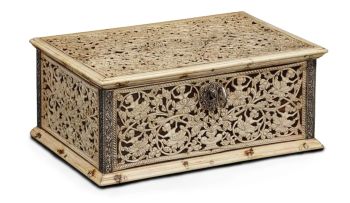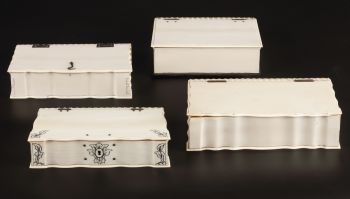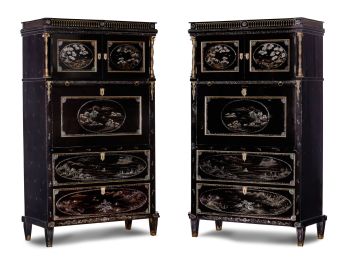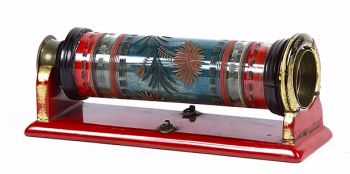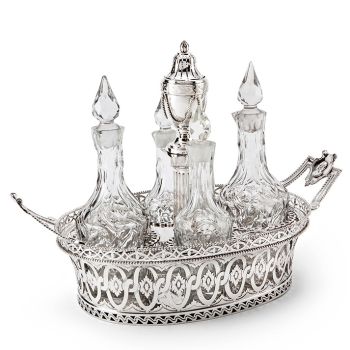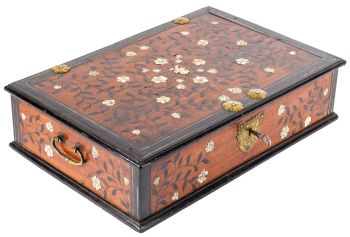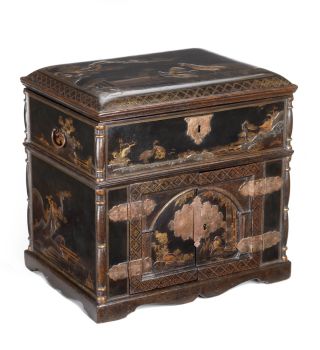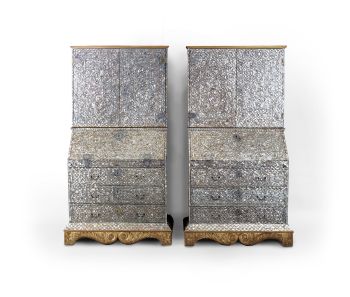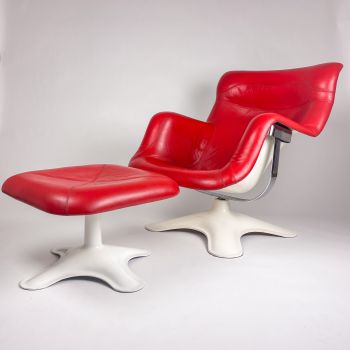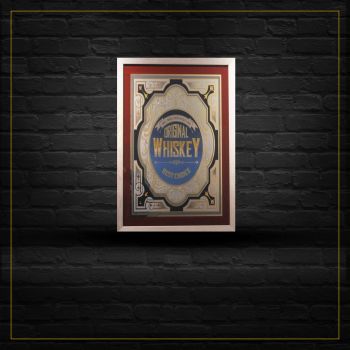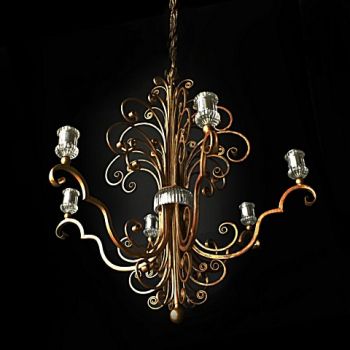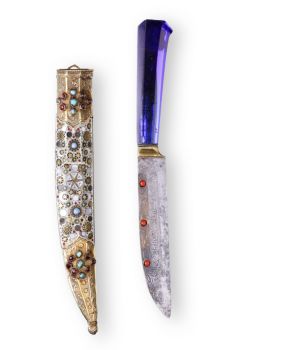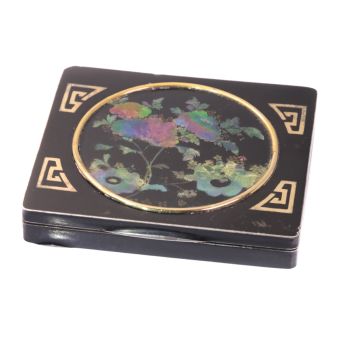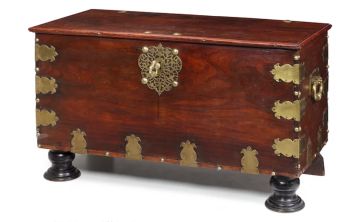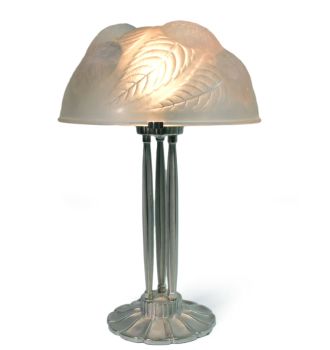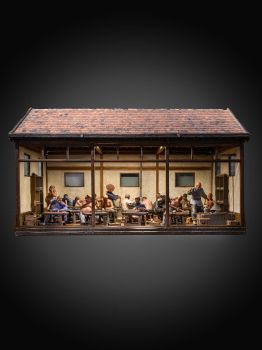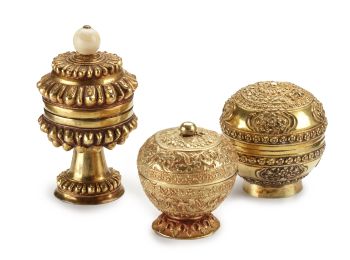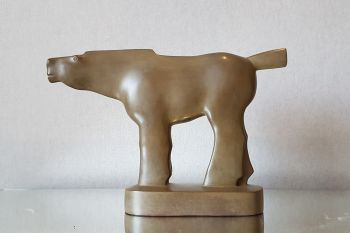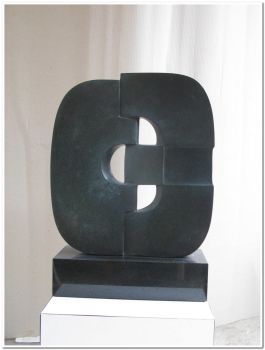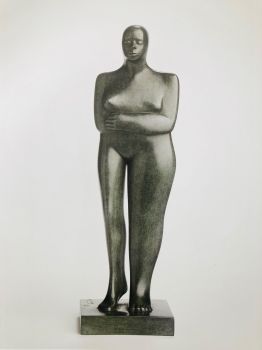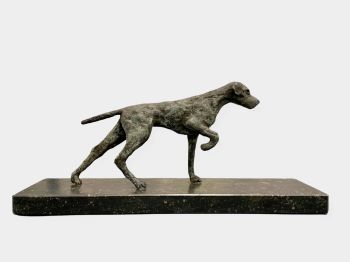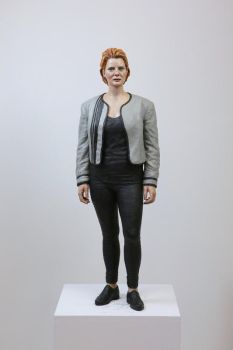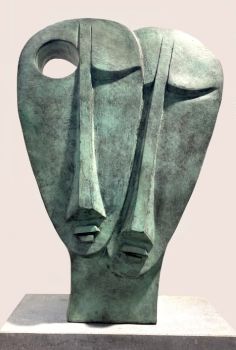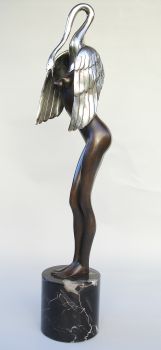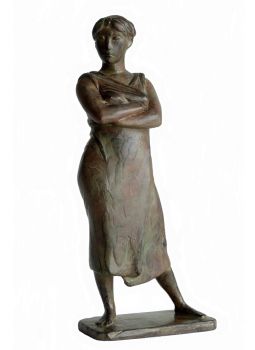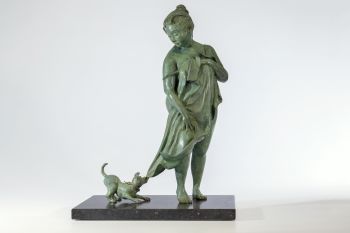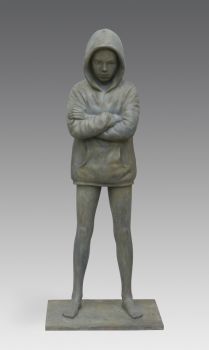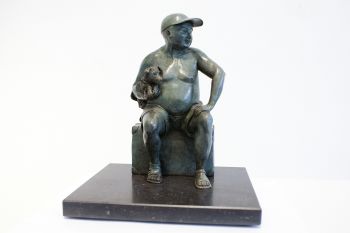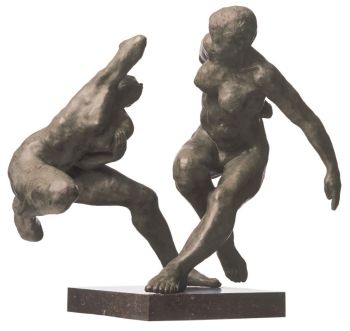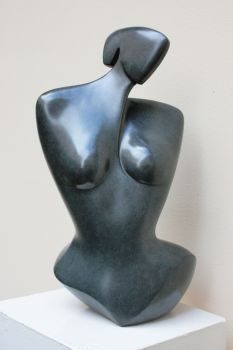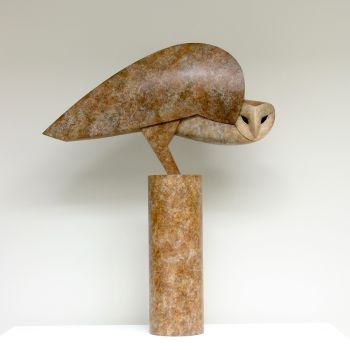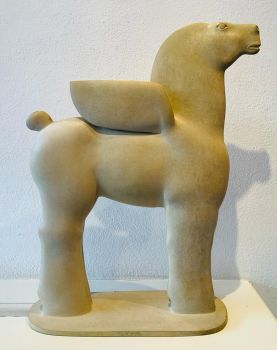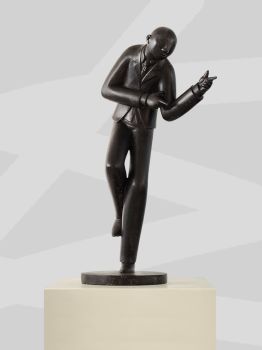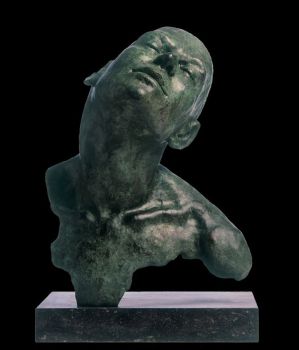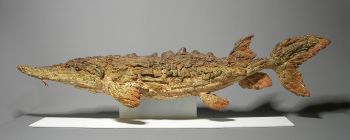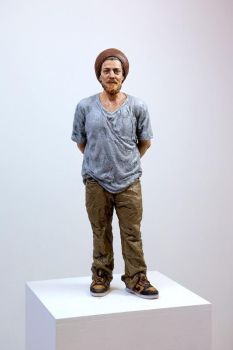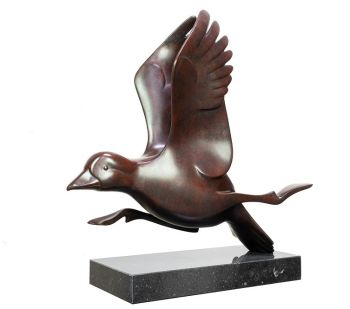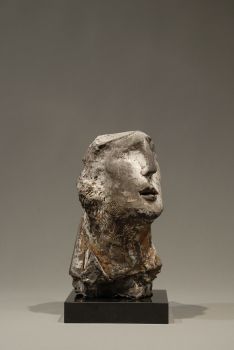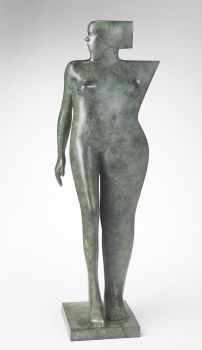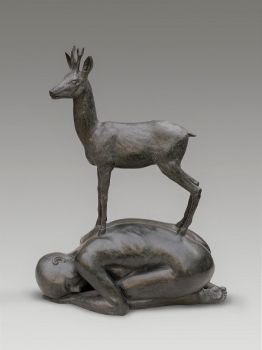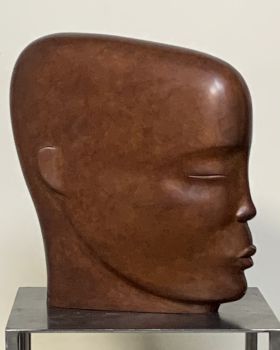Um "Cartel d'Alcove" francês Luís XV 1750
Louis-François Herbault
BronzeMetalEsmalte
35 ⨯ 25 ⨯ 13 cm
Atualmente indisponível via Gallerease
- Sobre arteA Cartel clock made by Louis-François Herbault, who became master clockmaker in 1743. He worked from the Quai Pelletier between 1744 and 1748 and later moved to the Rue de Grenelle Saint-Honoré between 1759 and 1789.
The clock is signed on the dial and on the clockwork: HERBAULT À PARIS
and bears the number: 264.
The clockwork has a three-week going train, a striking train on request, and an alarm. The striking train is operated with a cord. The white enamelled dial has Roman numerals to indicate the hours and Arabic numerals in the outer ring to indicate the minutes. The openwork hands are made of gilt bronze. The dial to set the alarm is made of blued steel.
The beautiful asymmetric gilt-bronze case is built up with flowery sprigs in the shape of a rose-bush. At the bottom two lovebirds have perched upon Amor’s quiver. The ensemble is a celebration of love. From the bottom up the branches are twining upwards around the dial to end in a crest of leaves and flowers. Behind the lovebirds there is an opening that shows the pendulum.
The case is an idiosyncratic example of the “style Rocaille”, which slightly differs from the sometimes exaggerating Rococo. The Rocaille is characterized by long undulating lines that look very natural. Often the lines consist of leaf and flower motives that culminate in an emphatic composition, like in this case the crest of leaves and flowers at the top. Although the details of objects made in the Rocaille style show a lot of asymmetry, the entities always have a balanced and natural appearance.
Provenance:
Private Collection Brussels - Sobre artistaLouis-François Herbault é conhecido como um relojoeiro francês. Herbault tornou-se Maître no ano de 1745. Tornou-se juré em 1761 e Garde em 1769. Sua oficina estava localizada no Quai Pelletier, 1744-1748 e na Rue de Grenelle St. Honoré, 1759-1789. Além de relógios, ele também produzia relógios. Uma peça específica em ouro e esmalte está em exibição no Victoria and Albert Museum, em Londres. Sua obra é assinada por HERBAULT A PARIS.
Artwork details
Categoria
Estilo
Material e Técnica
Cor
Related artworks
Artista Desconhecido
A Surinam-themed Amsterdam long-case clock1746 - 1756
Preço em pedidoZebregs & Röell - Fine Art - Antiques
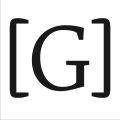 Com curadoria de
Com curadoria deGallerease Magazine
1 - 4 / 17Artista Desconhecido
The Stamford Raffles Secretaires.1800 - 1813
Preço em pedidoZebregs & Röell - Fine Art - Antiques
1 - 4 / 24- 1 - 4 / 24

